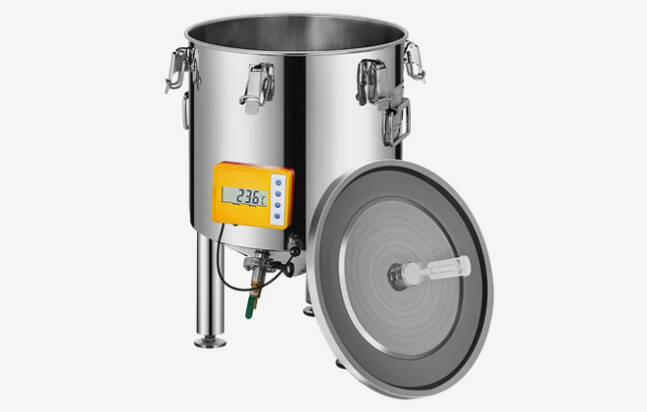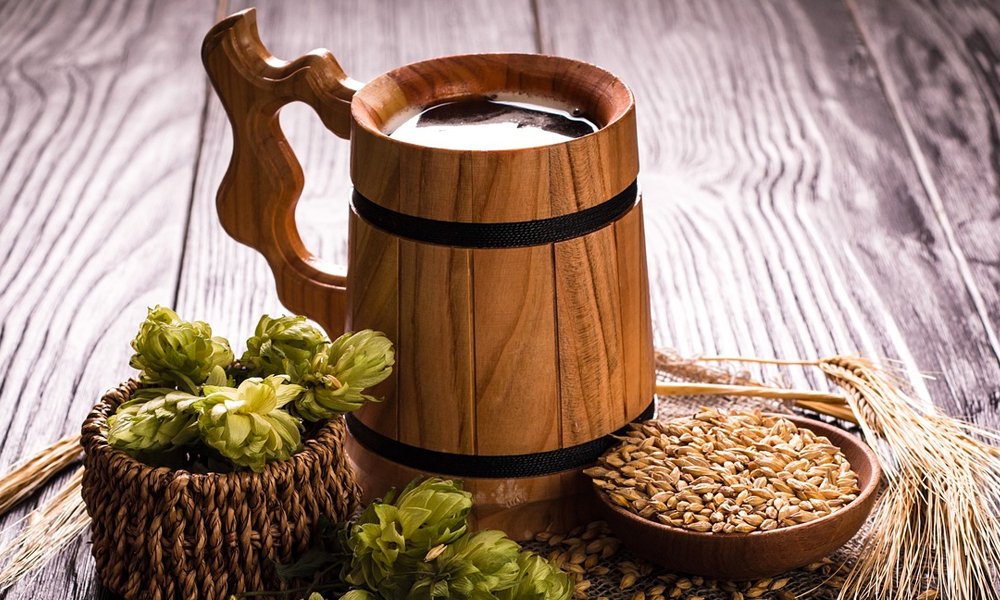If you didn’t know it already, there are more than 9,000 breweries currently operating in the United States alone. That’s an awful lot of brewers crafting IPAs, lagers, pale ales, stouts, and other beer styles. They got to their positions in a variety of ways. Some went to one of the various college programs like the well-known one at UC Davis. Others started in part-time, apprentice-like roles, and some started by simply home brewing in their own kitchen.
We’ve all heard the story of famed brewer and Boston Beer Company founder Jim Koch. Before he was a household name in the beer world, he brewed his now iconic Samuel Adams Boston Lager in his kitchen back in the early 1980s. Clearly, this was well before the craft beer boom and while Koch has a bit of a lead on you in terms of brewing acclaim, that shouldn’t stop you from getting in on the home brewing bandwagon. Better late than never, right?
Regardless of whether you have aspirations of one day opening your own craft brewery or you simply want to make beer for your friends and family, beginning your home brewing journey couldn’t be easier. While following directions and brewing an easy beer recipe isn’t rocket science, making it actually taste good is a different story.

What Do You Need To Buy?
At its core, novice homebrewers simply need a pot and a basic fermenter. “That said, for budget conscious newbies, I would recommend buying separate mash tun and boil kettles, using corny kegs fitted with dip tubes to ferment in, and having a dedicated chamber with a temperature controller for fermentations,” says Ryan Pachmayer, a Denver-based writer and head brewer at Yak & Yeti Brewpub.
All of this equipment can be found used for a reasonable price. “For those with a stronger starting budget, buying an electrical all-in-one kettle is a great place to start, and a conical fermenter that can handle pressure transfers at the very least,” he says.
If that sounds complicated, don’t worry too much. “There’s no shortage of home brewing kit’s available that have everything included to start. I’d recommend looking at your local homebrewing shop to get set up with a kit,” says Garth E. Beyer, certified cicerone and owner of Garth’s Brew Bar in Madison, Wisconsin.
Temperature Is Important (To A Degree)
While there are skills on the hot side, beginner brewers obsess over things like hitting the right mash temperature and gravities. “Those are important, but fermentation temperature and profile is going to make or break your beer,” says Pachmayer. “If your fermentation technique is strong, it won’t matter too much if you’re mashing at 147 Fahrenheit versus 150 Fahrenheit, or if you miss gravity by 10 percent in either direction.”
Temperature is still important though. “Aside from general sanitation practices, the one factor that can make the largest difference in the quality of your home brew is temperature control of your fermentation,” Beyer says. “You can have the best equipment and ingredients, but if you don’t manage your fermentation temperature, you can quickly lower the quality of the finished product. I’d recommend using a fridge or chest freezer with a temperature regulator (they’re about $15 online).”
Let Your Friends And Family Help Out
Nobody wants to be embarrassed by the taste of their beer after working tirelessly to brew it. Your first step after sampling it yourself (as long as it tasted okay by your standards) is to let your friends and family try it. While they might just be happy with the opportunity, they’ll probably be blunt with their thoughts. Also, ask them to help you bottle it.
“If you’re bottling for the first time, be sure to invite some friends to help (preferably ones that will bring some of their own homebrew),” Beyer says. “It’s the least fun part, especially when you’re doing it alone. Save your back. Ensure your whole first homebrew experience ends on a positive note. Invite friends to help.”

Join A Homebrewers Club
One of the best ways to actually know if your beer is any good is to join a homebrewers club. They’ll likely critique your beer better than your friends and family. Visit an active local homebrew club, meet other homebrewers, taste their beers and learn from the people whose beer you like best. Study a lot.
“When you think you have things figured out, go talk to a professional brewer whose beer you really respect, buy their beer and ask them about their beer and your own techniques and process,” Pachmayer says.
Compare Your Beer To The Pros
When you feel you’ve made a great beer, do a side by side with a fantastic commercial example. Expect your beer to fall short but figure out why. “If it’s a beer you felt you brewed nearly flawlessly, you’ll often notice subtle differences side by side: Mouthfeel for example, depth of flavor,” Pachmayer says.
Be sure that commercial example is fresh, so you can compare it to the true ideal of that beer. “When I do this, maybe one in five times my beer holds up to the commercial example,” he says.” Those are special times, there’s a great satisfaction that comes with knowing you’ve brewed something of similar quality to a commercial beer that you consider great.”
Aim for great beer, because there are many “good” beers on shelves. Because of the amount of time it takes to brew your beer, it better be something you really want to drink (and share).
“Homebrewing is a journey, there will be times where you brew a couple of beers, you’re not happy with, it’s up and down but if you have a focus and dedication to it, you can make a terrific end product,” says Pachmayer.
Cleaning Is The Most Important Step
Cleaning is probably 95 percent of the work on the professional side, and at least 75 percent of the work on the home side. “Make sure you have a plan to properly sanitize your equipment,” Pachmayer says. “Very hot water, caustic and acid are necessary.” Plastic fermenters are a temporary solution at best, you’d be better to just avoid them from day one though as they break down easier.
Learn How Beer Is Supposed To Taste
Get involved in the tasting world, through the Beer Judge Certification Program or Cicerone. “Most importantly, do what you enjoy, this is a hobby that should be fun, take it as deeply as you wish, but never lose sight of the joy it brings,” Pachmayer says.
Keep It Simple (At First)
We get it, you decided to get into homebrewing because you’re a fan of delicious, complex craft beer. You’d rather be brewing something more exciting than a blonde ale or pilsner. But you have to start somewhere. If you dive right into a complex beer style without any experience, you probably won’t be content with the results.
“As exciting as it is to make a really fun flavored beer like a pumpkin pie beer or a triple dry-hopped beer, keep things basic and simple for the first few brews until you get the hang of it,” Beyer says. “There’s nothing worse than spending a hundred bucks on additional ingredients for a recipe and have that beer spoil or turn out poorly. Grasp the basics and then build on them.”




